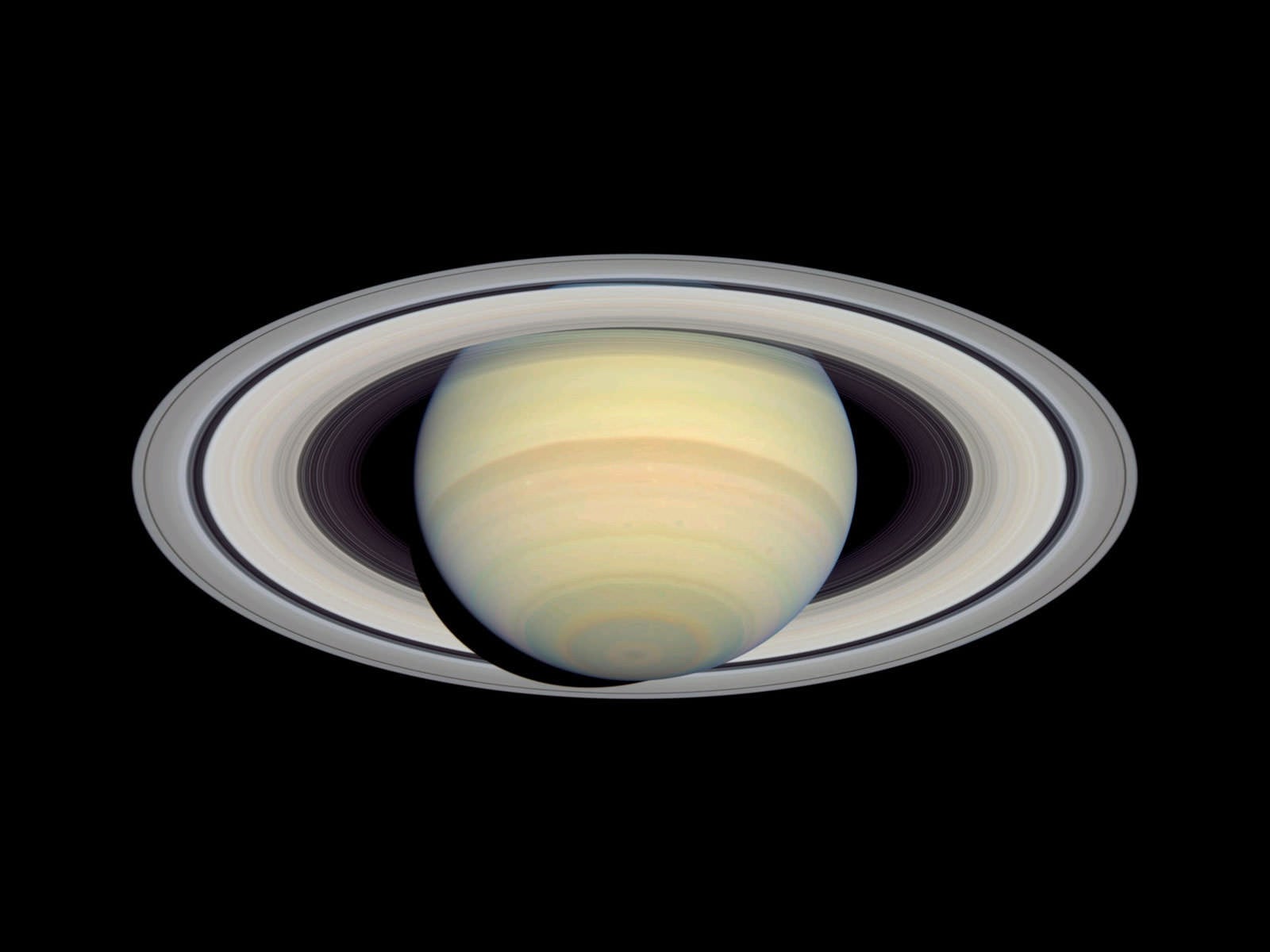[/caption] The following Saturn fact sheet is based on
NASA's excellent planetary fact sheets
. Saturn is the 6th planet from the Sun, and the second largest planet in the Solar System.
Mass: 568.46 x 10
24
kg
Volume: 82,713 x 10
10
km
3
Average radius: 58,232 km Average diameter: 116,464 km Mean density: 0.687 g/cm
3
Escape velocity: 35.5 km/s Surface gravity: 10.44 m/s
2
Natural satellites: 60
Rings? - Yes
Semimajor axis: 1,433,530,000 km
Orbit period: 10,759.22 days
Perihelion: 1,352,550,000 km
Aphelion: 1,514,500,000 km
Mean orbital velocity: 9.69 km/s
Orbit inclination: 2.485°
Orbit eccentricity: 0.0565
Sidereal rotation period: 10.656 hours
Length of day: 10.656 hours
Axial tilt: 26.73°
Discovery: Known since prehistoric times
Minimum distance from Earth: 1,195,500,000 km
Maximum distance from Earth: 1,658,500,000 km
Maximum apparent diameter from Earth: 20.1 arc seconds
Minimum apparent diameter from Earth: 14.5 arc seconds
Maximum visual magnitude: 0.43
We've written many articles about Saturn for Universe Today. Here's an article about the
rotation of Saturn
, and here's an article about
the atmosphere of Saturn
.
If you'd like more info on Saturn, check out
Hubblesite's News Releases about Saturn
. And here's a link to the
homepage of NASA's Cassini spacecraft
, which is orbiting Saturn.
We've also recorded an entire episode of Astronomy Cast just about Saturn. Listen here,
Episode 59: Saturn
.
 Universe Today
Universe Today
